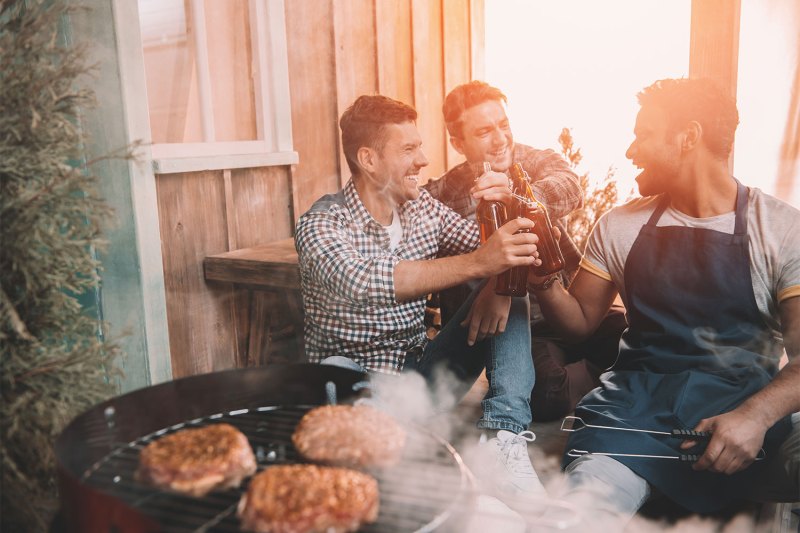
There’s a variety of ways to introduce Erica Blaire Roby — former lawyer-turned-sommelier, wine expert-turned-pitmaster, Master of ‘Cue-turned-mom. The first thing that stands out, though, is her smile. It describes a woman who’s always in the right place, no matter what profession she’s representing. The winner of the second season of BBQ Brawl on the Food Network sat down with The Manual to discuss her favorite passion — good barbecue.
“I think it’s our responsibility. If you harness your trade, and you’re competent, you have to give back. You want to leave a legacy that uplifts and helps other people,” Roby told The Manual. “I’ve always believed that food, especially barbecue, is the universal welcome mat. It’s supposed to bring people in and bring people together. It’s not supposed to tear people apart.”
Now, as the smoky part of summer has begun, Roby’s bringing the backyard barbecue heat — grill tips for all aspiring BBQ pitmasters among The Manual readers.
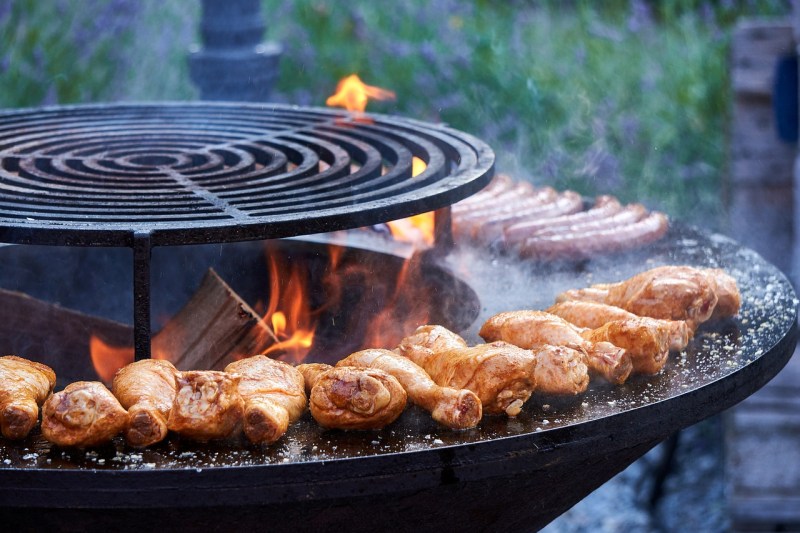
Grill considerations
In choosing your cooking appliance, whether it be a little Smoky Joe or a monster combo grill and smoker, it’s key to learn what other people’s experience is.
“The important thing to do is do your research,” Roby said. “Read the reviews, go on the social media groups created by actual users, and you will learn so much.”
One thing to realize, however, is that the perfect grill doesn’t exist. One man’s poor substitute for barbecuing might be another woman’s perfect match.
“I embrace all grills. I do not care,” Roby said. “I whipped butt and cleaned up at Memphis in May at the world barbecue championship on my pellet grill. People were hazing me and laughing, and then, when I walked on that stage, I twice got a perfect score.”
One seemingly obvious consideration is to make sure the grill fits your space, accounting for the smoke and the smell that the roaster will release. Create your zen space where it fits.
“It’s like having a big screen TV that’s way too big for your living room. Yes, it’s impressive, but now your neck is crooked because you have to look up because you’re so close to it,” Roby pointed out.
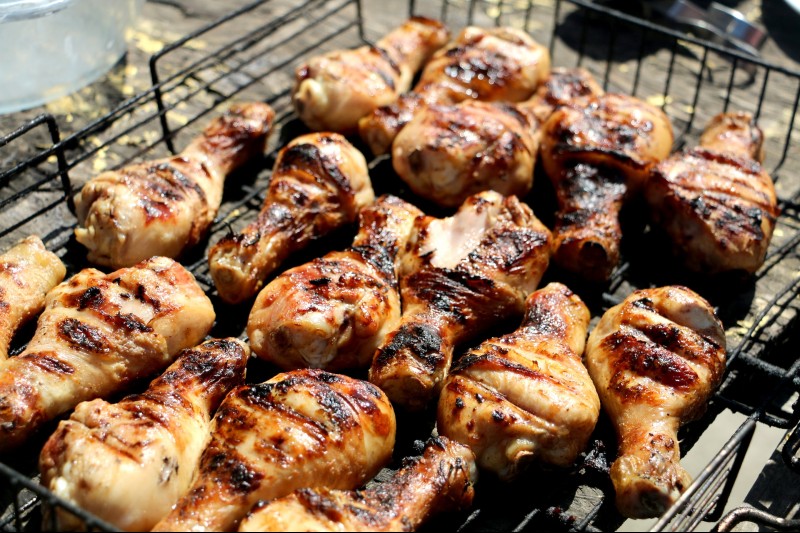
Spice your grill
“Once you’ve picked your grill, realize that it’s been in a factory. You have to season your grill first, or your food is going to taste like polyurethane,” Roby stated.
- The BBQ chef recommends applying Pam or other cooking spray onto the entire inside of the grill.
- Slice a white onion, and put it on the grill with some fatty bacon.
- Add in a pan of water and apple cider vinegar, leave it to cook on medium-high just run for 45 minutes.
“Now you’re getting flavor and your fingerprint on the grill,” Roby added. “Let it cool down, and wipe the grill down lightly. Take some fresh white onion and rub it on the grill grates. This takes off the residue. (You can use potatoes, too, if you don’t like onions.) This is an integral step.”
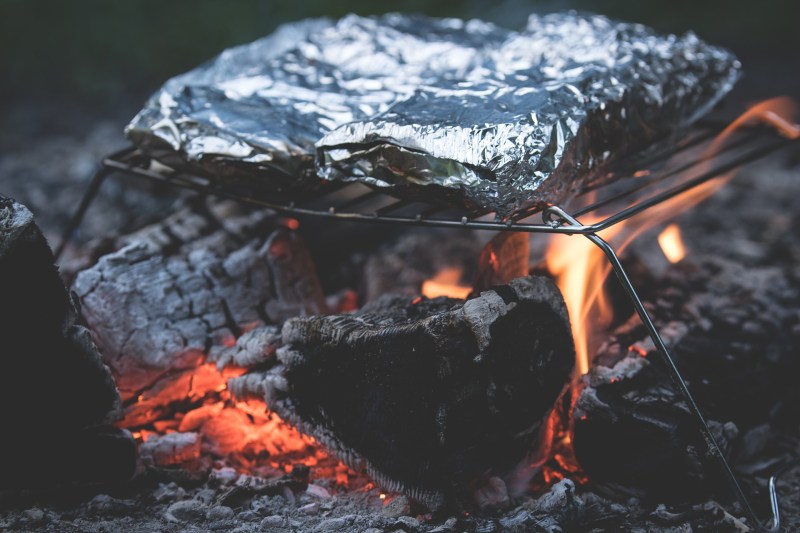
Control your smoke
One of the benefits of BBQ cooking with a charcoal grill is that it creates smoke, flavoring whatever you’re grilling. According to Roby, you can even control smoke in gas and other grills.
First, soak wood chips in a muffin pan.
“Then you put foil over the top and just take a toothpick or a fork and poke a bunch of little holes,” Roby said. “Put that in, and that creates an internal smoker even in a gas grill.”
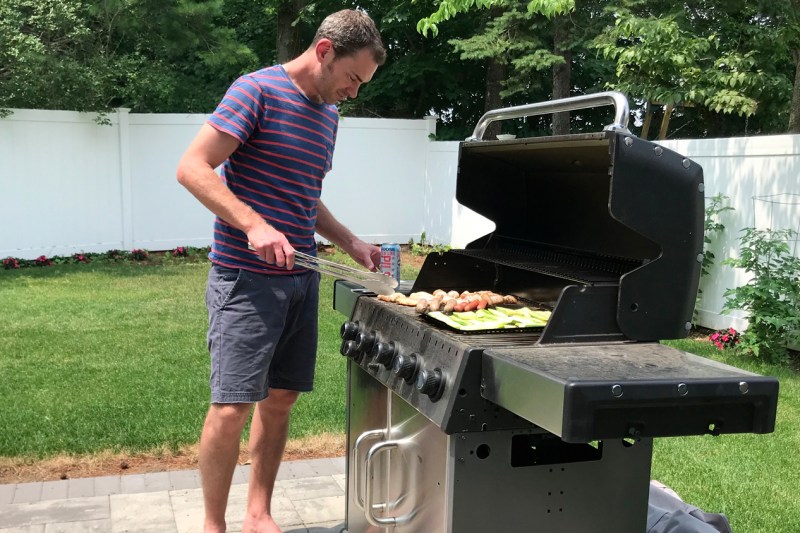
Pay attention to the palate and know your nose
With any type of barbecue grill, if you’re going to be using wood, make sure that you read up about its flavor.
“Read about what meats are good for hickory, or if you’re using mesquite. Post oak is good for everything, so you can’t go wrong,” Roby said. “I finish my ribs off (and my pork) using cherry (wood). It almost makes a barbecue perfume that I put on right at the very end.”
“And don’t use lighter fluid. Just don’t do it,” she warned.
One of the things that the barbecue master focuses on is the palate, which comes from her time as a sommelier. Roby almost always includes hints of acid, so the rub “doesn’t turn flabby.” And she makes sure to balance salt and sugar, as the two bounce off of each other. Roby is even bringing in savoriness to fired foods.
“What I’ve been playing with recently is using umami flavors,” Roby said. “A lot of that is dried mushrooms as a finishing powder. Yeast extract (also) gives you that good protein taste.”
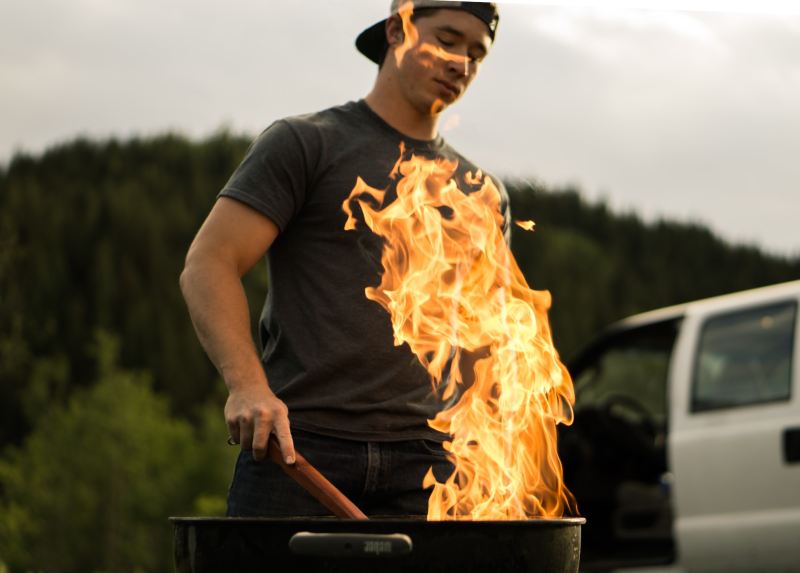
Use the right tools
No wire brushes, similar to what Joan Crawford screamed. Metal fibers can get into your food. Instead, use a flat metal scraper or aluminum rubbed with oil to clean grates.
“You really need extra long tongs, too. If there’s a lot of meat in the smoker and you have to reach all the way in back, you don’t want to get a BBQ tattoo,” Roby stated.
Fire gloves cover and protect forearms from superheated air. Cutting gloves save fingertips from sharp knives.
“Use a timer and a meat thermometer. They’re there for you to use. It’s part of food safety. There’s even new grills out there that record the internal temperature of the meat. And a lot of these have apps that connect to your phone,” Roby said.

Sous vide keeps cuts warm
It was at a NASCAR event in Austin that things started going sideways for the Blue Smoke Blaire crew. Cooking early, the team realized it was going to a late crowd. And then it started to storm.
“We’re battling through it. And then one of the guys, he was like, ‘You know, we should just get a FoodSaver machine, and we should be basically doing sous vide,'” Roby said.
A FoodSaver machine vacuum seals food, and with sous vide, that food can be cooked in boiling water still sealed in its package. This method ended up not only saving the team’s tails, but ended up being an incredible upgrade to Roby’s system, sealing in the smoke and the spice while preserving pre-cooked food.
“That ended up working out beautifully. And now, I have my sous vide FoodSaver, and I use it for so much. It keeps that freshness and that’s something that was a game changer,” Roby added.
With that pro tip, let’s get back to the basics.
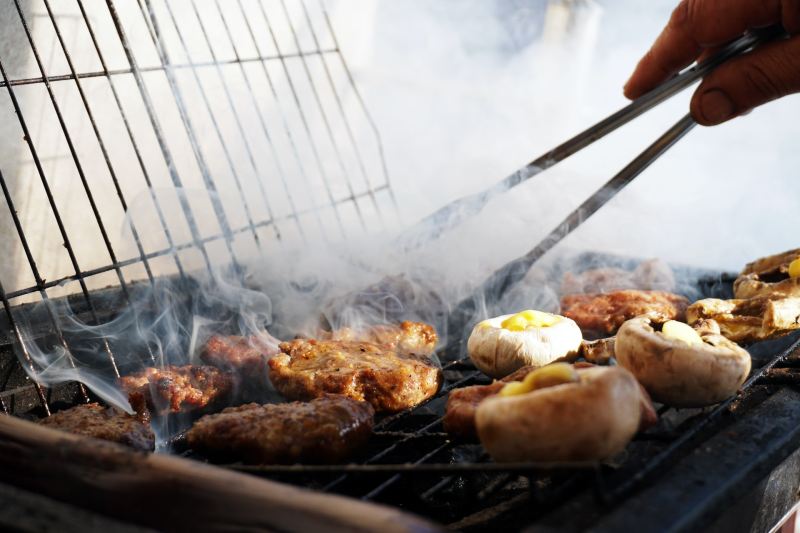
Everyone has to start somewhere
Even if you’re new to the game, there’s no shame in firing up and giving the grill a shot.
“Everyone has to start somewhere,” Roby said.
For Roby, transitioning from her position as a sommelier, she began with volume practice to learn the ins and outs of running a commercial grill for neighborhood volunteers.
“I started doing free pop-ups,” Roby added. “Because it was free, I knew that people wouldn’t complain if I was slow.”
She recorded notes and cooking times with a digital timer. She learned what tools she needed on hand, necessary inventory, and how to connect with hungry customers.
“I started actually talking to people that were ordering,” she said. “You have to talk because you want them to come back and you want them to have that (personal) relationship with you.”

Erica Blaire Roby’s Texas brisket recipe
(From Blue Smoke Blaire)
Ingredients:
- 1 prime packer brisket (12-18 pounds)
- 1 cup Kosher salt
- 1 cup coarse black pepper
- 1/4 cup granulated garlic
- Yellow mustard
- 1/2 cup pickle juice
- Post oak or hickory wood (for smoking)
Method:
-
Trim the brisket fat to an even 1/4 inch.
- Mix together salt, pepper, and garlic until combined.
- Mix mustard and pickle juice in a small bowl.
- Rub all sides of the brisket in the mustard/pickle juice mixture.
- About 16 inches above the brisket, shake the salt, pepper, garlic mixture gently in a “W” pattern until the entire brisket is covered. Repeat on all sides.
- Cover and place brisket back in the refrigerator for a minimum of 1 hour.
- Start your grill or smoker. Get it to 275 degrees Fahrenheit and add wood (either chips or small chunks) to your coals.
- Place the brisket (fat-side up) onto the grates.
- Smoke brisket until it reaches an internal temperature of 175 degrees Fahrenheit. Take it off the smoker and wrap it in butcher paper.
- Place it back on your grill or smoker (fat-side up) until the internal temperature reaches 207 degrees Fahrenheit. Remove it from the smoker, but keep it in the butcher paper. Flip the brisket upside down and place it in a cooler to rest for 1 hour.
- Discard the butcher paper, and slice it against the grain of the brisket.
Editors' Recommendations
- The science of drinking at high altitudes (plus, expert tips for your mid-flight cocktail)
- What is caviar? A seafood expert breaks down all the details
- How to age fish at home (your new favorite hobby)
- Yes, you should be preheating an air fryer — here’s why
- 9 best food sources for getting beta-carotene in your diet





